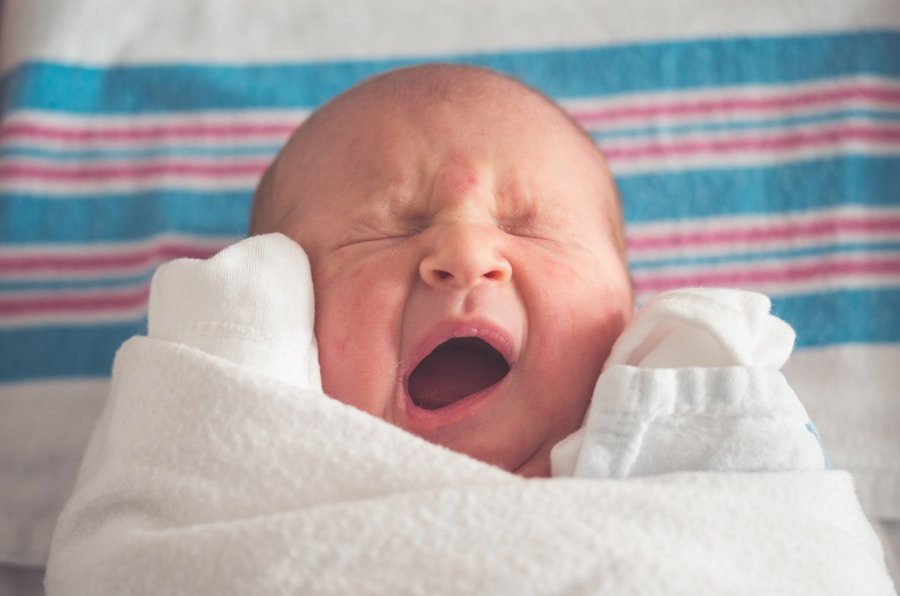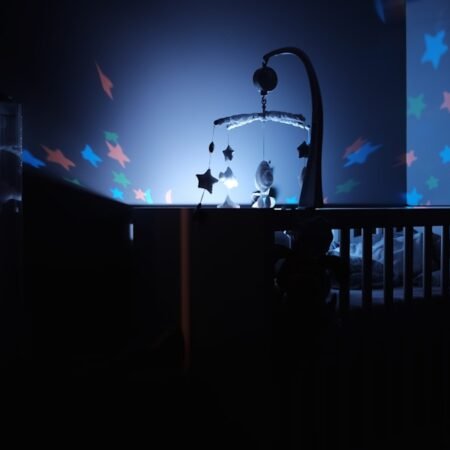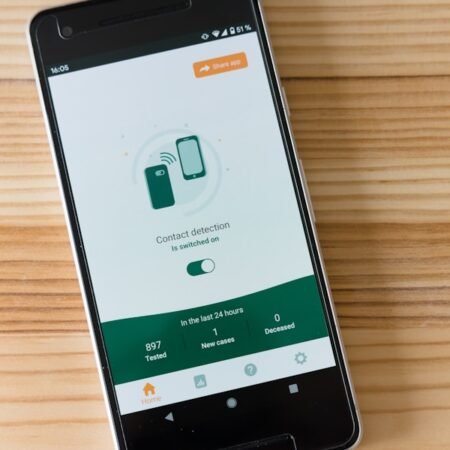As a parent, the safety and well-being of your little one is always a top priority. Baby-proofing your home is an essential step in creating a safe environment for your baby to explore and grow. Understanding the importance of baby-proofing is crucial in ensuring that your little one is protected from potential hazards and accidents. From electrical outlets to sharp corners, there are numerous dangers lurking in every room of your home that can pose a threat to your baby’s safety. By taking the time to baby-proof your home, you can create a secure and nurturing environment for your little one to thrive in.
Baby-proofing is not only about preventing accidents, but it also allows your baby to explore and learn in a safe environment. By removing potential hazards and securing dangerous areas, you can give your baby the freedom to move and play without constant supervision. Baby-proofing also provides peace of mind for parents, knowing that their little one is protected from harm. It’s important to remember that baby-proofing is an ongoing process, as your baby grows and becomes more mobile, new hazards may arise. By staying vigilant and regularly assessing your home for potential dangers, you can ensure that your baby is always safe and secure.
Key Takeaways
- Baby-proofing is essential for keeping your little one safe and secure in your home.
- Safety gates and locks are crucial for preventing accidents and injuries in various rooms.
- Baby-proofing your nursery includes securing cribs, changing tables, and other furniture.
- Electrical outlets and cords should be covered and secured to prevent accidents.
- When traveling with your baby, ensure car seat and stroller safety for a secure journey.
Essential Baby-Proofing Gear for Every Room in Your Home
When it comes to baby-proofing gear, there are a few essential items that every parent should have in their home. Safety gates are a must-have for blocking off stairways, doorways, and other potentially dangerous areas. Look for gates that are sturdy and easy to install, with a secure locking mechanism to prevent your little one from bypassing them. Outlet covers are another essential baby-proofing item, as they prevent your baby from sticking their fingers or objects into electrical outlets. Be sure to choose outlet covers that are difficult for little hands to remove, and consider using sliding outlet covers for added protection.
In the kitchen, cabinet locks are essential for keeping your baby out of cabinets and drawers that contain sharp objects, cleaning supplies, or other hazardous items. Look for locks that are easy for adults to operate but are secure enough to prevent your baby from opening them. In the bathroom, consider installing a toilet lock to prevent your baby from accessing the toilet water or potentially falling in. Additionally, securing furniture to the wall with anti-tip straps can prevent accidents caused by climbing or pulling on furniture. These essential baby-proofing gear items can help create a safe environment for your little one to explore and play in every room of your home.
Choosing the Right Safety Gates and Locks
When it comes to choosing safety gates and locks for your home, there are a few key factors to consider. Safety gates come in a variety of styles and materials, so it’s important to choose one that is suitable for the area you want to block off. Pressure-mounted gates are easy to install and remove, making them ideal for temporary use in doorways or between rooms. Hardware-mounted gates are more secure and are best for blocking off stairways or other high-traffic areas. Look for gates with a secure locking mechanism that is easy for adults to operate but difficult for little ones to figure out.
When it comes to cabinet locks, there are several different types to choose from, including magnetic locks, adhesive locks, and sliding locks. Magnetic locks are discreet and easy for adults to operate, but may be difficult for some people with dexterity issues. Adhesive locks are simple to install but may not be as secure as other types of locks. Sliding locks are a good option for cabinets that you need to access frequently, as they can be easily opened and closed with one hand. Consider the layout of your home and the specific needs of each area when choosing safety gates and locks to ensure that they provide the best possible protection for your little one.
Baby-Proofing Your Nursery: Cribs, Changing Tables, and More
| Category | Product | Price | Rating |
|---|---|---|---|
| Electrical Safety | Outlet Covers | 5.99 | 4.5/5 |
| Furniture Safety | Anti-Tip Furniture Straps | 12.99 | 4.8/5 |
| Baby Gates | Pressure-Mounted Baby Gate | 29.99 | 4.7/5 |
| Corner Guards | Soft Foam Corner Protectors | 8.99 | 4.6/5 |
The nursery is a place where your baby will spend a significant amount of time, so it’s important to ensure that it is a safe and secure environment. When it comes to baby-proofing the nursery, there are a few key areas to focus on. The crib is one of the most important pieces of furniture in the nursery, so it’s crucial to ensure that it meets current safety standards. Look for a crib with slats that are no more than 2 3/8 inches apart to prevent your baby from getting stuck or falling out. Additionally, be sure to remove any soft bedding, pillows, or stuffed animals from the crib to reduce the risk of suffocation or SIDS.
Changing tables are another area of the nursery that should be carefully baby-proofed. Be sure to use a safety strap every time you change your baby’s diaper to prevent them from rolling off the table. Keep all diapering supplies within arm’s reach so that you never have to leave your baby unattended. Additionally, consider installing drawer locks on any drawers within reach of the changing table to prevent your little one from accessing potentially hazardous items. By taking the time to baby-proof the nursery, you can create a safe and nurturing environment for your baby to sleep, play, and grow in.
Safety-First: Baby-Proofing Electrical Outlets and Cords
Electrical outlets and cords pose a significant hazard to babies and young children, so it’s crucial to take steps to baby-proof them throughout your home. Outlet covers are an essential baby-proofing item that can prevent your little one from sticking their fingers or objects into electrical outlets. Look for outlet covers that are difficult for little hands to remove, and consider using sliding outlet covers for added protection. Additionally, be sure to secure any loose cords or wires out of reach of your baby to prevent them from pulling on them or chewing on them.
In addition to outlet covers and cord management, it’s important to be mindful of other electrical hazards in your home. Be sure to use cord shorteners or wind-ups on blinds or curtains cords to prevent strangulation hazards. Keep all electronics and appliances out of reach of your little one, and consider using cord protectors on any exposed cords or wires. By taking these simple steps to baby-proof electrical outlets and cords in your home, you can significantly reduce the risk of electrical accidents and keep your little one safe.
Traveling Safely with Your Baby: Car Seat and Stroller Safety
Traveling with your baby requires careful consideration of their safety at all times. When it comes to car seat safety, it’s crucial to choose a car seat that is appropriate for your baby’s age, weight, and height. Be sure to install the car seat correctly according to the manufacturer’s instructions, and always use it on every trip, no matter how short. Additionally, be sure to secure your baby in the car seat properly every time you travel, using the harness straps according to the manufacturer’s guidelines.
Stroller safety is another important consideration when traveling with your baby. Be sure to choose a stroller that meets current safety standards and has a secure harness system to keep your little one in place. Always use the stroller’s brakes when parked or stopped, and never leave your baby unattended in the stroller. Additionally, be mindful of potential hazards such as sharp edges or pinch points on the stroller, and be sure to keep all small parts and accessories out of reach of your little one. By following these guidelines for car seat and stroller safety, you can ensure that your little one travels safely wherever you go.
Tips for Creating a Safe and Secure Outdoor Play Area for Your Baby
Creating a safe and secure outdoor play area for your baby is essential for allowing them to explore and play outside while staying protected from potential hazards. When setting up an outdoor play area for your baby, be sure to choose age-appropriate toys and equipment that are safe and durable. Look for toys that are free from small parts or choking hazards, and be mindful of potential pinch points or sharp edges on playground equipment. Additionally, be sure to provide plenty of shade and sunscreen when playing outside to protect your baby from the sun’s harmful rays.
When it comes to outdoor play areas, it’s important to be mindful of potential hazards such as pools or bodies of water. Be sure to install a fence around any pools or water features in your yard, and always supervise your baby closely when they are near water. Additionally, be mindful of potential tripping hazards such as uneven surfaces or loose gravel, and be sure to provide a soft landing surface under any playground equipment. By taking these simple steps to create a safe and secure outdoor play area for your baby, you can allow them to enjoy the great outdoors while staying protected from potential dangers.
In conclusion, baby-proofing gear is an essential part of creating a safe environment for your little one to explore and grow in. By understanding the importance of baby-proofing and taking steps to secure every room in your home, you can ensure that your baby is protected from potential hazards and accidents. From safety gates and locks to electrical outlet covers and cord management, there are numerous ways to create a safe environment for your little one at home. Additionally, traveling safely with your baby and creating a secure outdoor play area are important considerations for allowing them to explore the world while staying protected from potential dangers. By taking these simple steps to baby-proof your home and surroundings, you can provide a safe and nurturing environment for your little one to thrive in as they grow and develop.
FAQs
What is baby-proofing gear?
Baby-proofing gear refers to a variety of products and devices designed to create a safe environment for babies and young children. These products are intended to prevent accidents and injuries by securing potentially hazardous areas and items in the home.
What are some common types of baby-proofing gear?
Common types of baby-proofing gear include safety gates, outlet covers, cabinet locks, corner guards, door knob covers, and furniture straps. These products are designed to prevent access to dangerous areas and items, such as stairs, electrical outlets, and sharp corners.
When should I start baby-proofing my home?
It is recommended to start baby-proofing your home before your baby becomes mobile, typically around 6-8 months of age. However, it’s never too early to start thinking about baby-proofing and making your home safe for your little one.
How do I choose the right baby-proofing gear for my home?
When choosing baby-proofing gear, consider the specific needs of your home and the developmental stage of your child. Look for products that are easy to install, durable, and meet safety standards. It’s also important to regularly check and maintain baby-proofing gear to ensure it remains effective.
Where can I purchase baby-proofing gear?
Baby-proofing gear is widely available at baby specialty stores, department stores, and online retailers. It’s important to purchase products from reputable brands and retailers to ensure their safety and effectiveness.








































